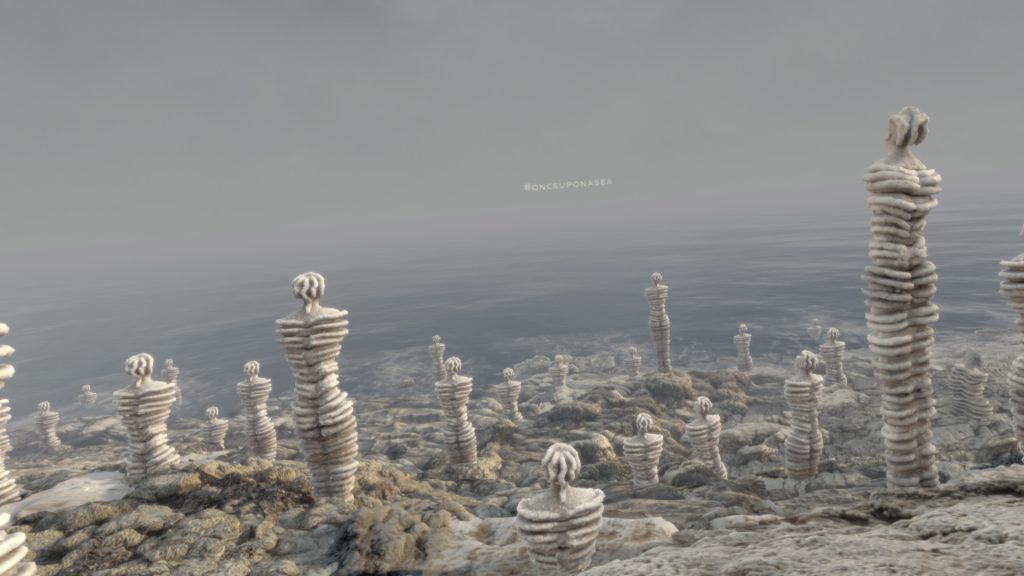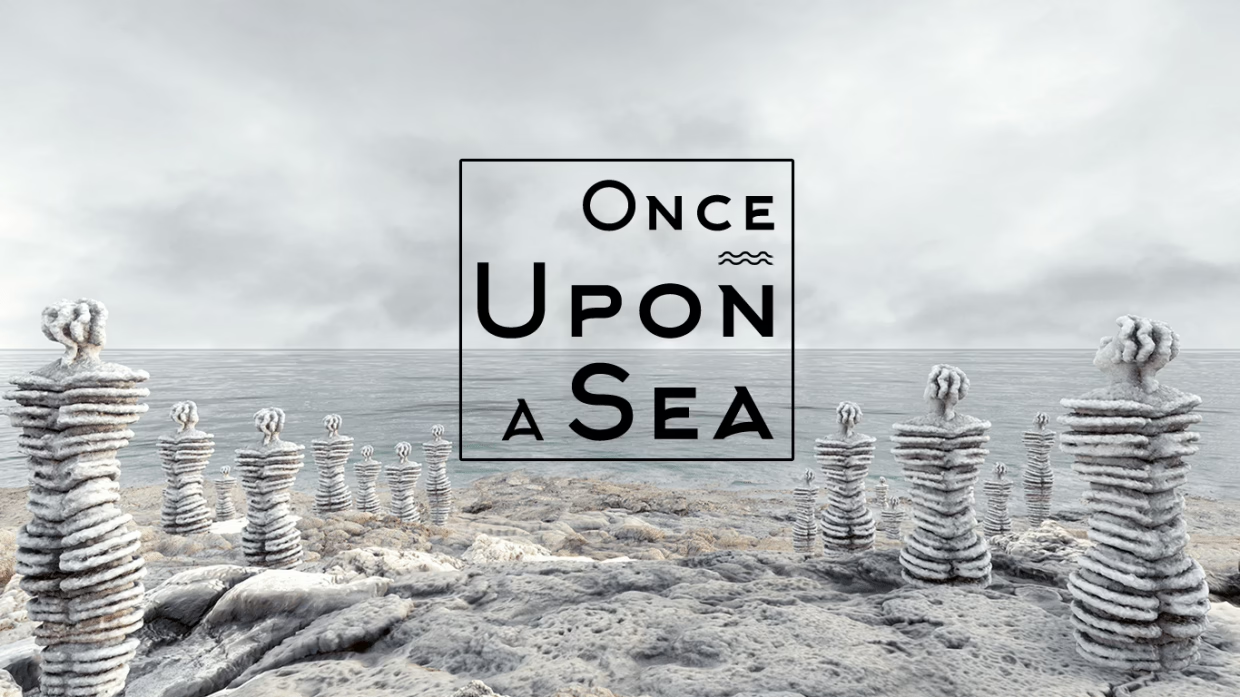Once Upon a Sea is a poetic, interactive XR documentary telling the tragic tale of the legendary Dead Sea. Through a physical exploration of the sea’s forbidden, moonlike landscapes, to intimate encounters with local characters, the user gets a rare glimpse into one of the world’s most dangerous, soon to be extinct, wonders.
From the product description
The Dead Sea has the highest salt content of any body of water in the world and it’s in Israel. That was about the extent of my awareness of this desolate region until I tried this experience. It’s amazing how alien the region looks, and how much the area continues to be affected by the actions of humans. People still live nearby and even swim in the water, though it’s not nearly the tourist attraction it once was. Once Upon a Sea is a VR documentary that gives you an up-close look at the sea and the area around it. Read on to learn more about it.
About the Experience
I wasn’t entirely sure what to expect when I started up this app. It’s an interactive documentary, which can mean different things. When it launches, you’re standing in a wide-open empty space. Some glowing spots fade in around you, narration begins, and captions appear. Pretty soon you’re standing in water.
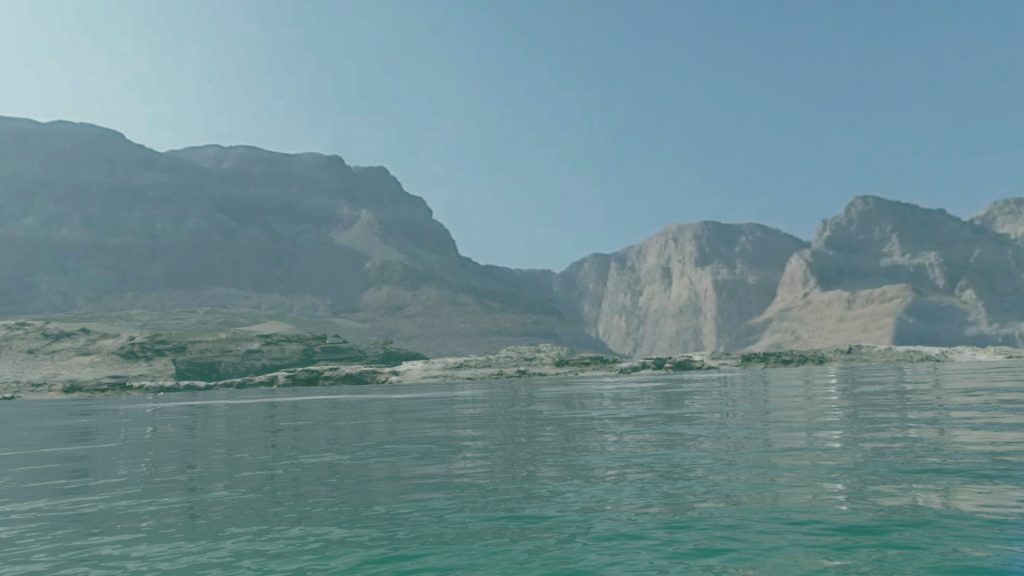
After additional narration, some points of light appear around you in the water. Touching the spots moves the experience forward. Once out of water, you spend some time on the shore. It looks really good, and you can see little pools of briny water shimmering, along with various sunken spots. You can move around somewhat via physical walking or teleportation, but the traversable area is much smaller than what you can see.
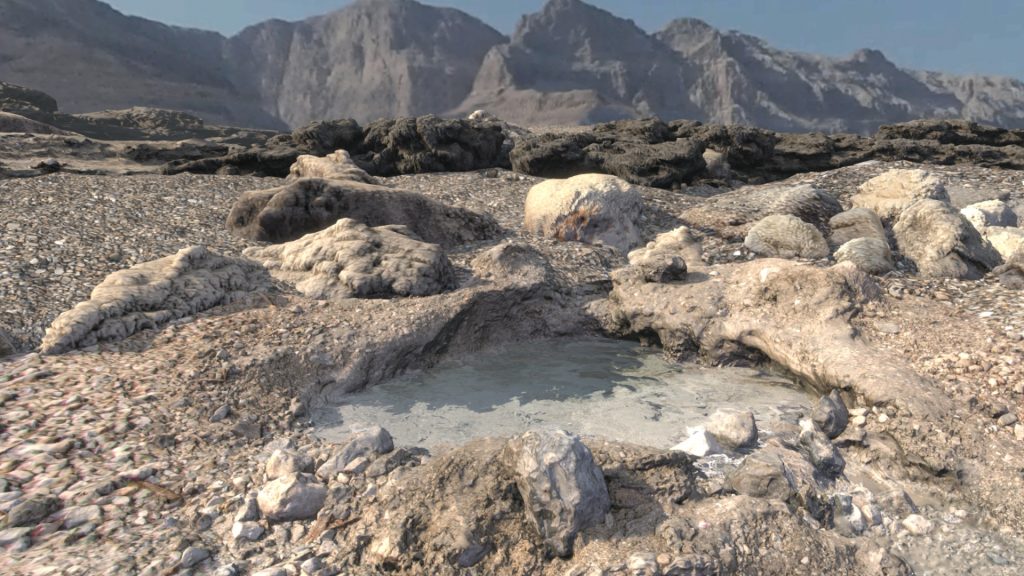
Once Upon a Sea is broken into four parts (3 chapters and an epilogue). The entire experience took me around 45 minutes to complete. Some parts are photo-realistic captures of the environment, while others are 360° video. I’m not a huge fan of surround video. My instinct is to try to walk around the environment, but if you move more than a few inches your brain rebels since your point of view is locked to the camera. As long as you stand still though, only turning your head, it looks fine.
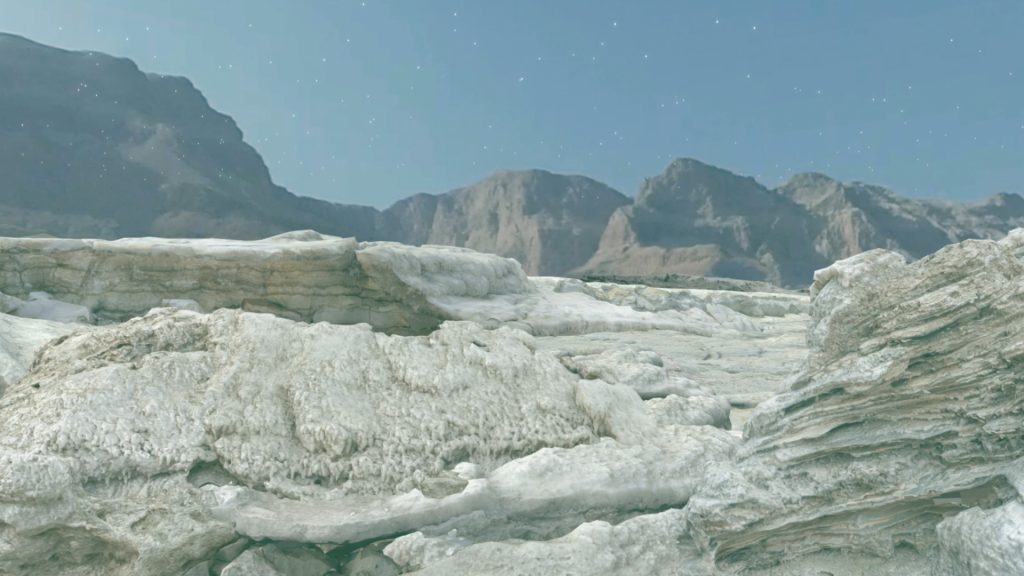
You get to learn about a woman who, due to health conditions, moved to the area and soaks and swims in the Dead Sea daily. There’s also a man who used to run an RV park by the water, and another man who ran a successful date farm at one point, but then sinkholes started opening up and destroyed the area and even the roads leading to it. It’s quite dramatic and makes it look like a post-apocalyptic wasteland.
The sinkholes are a big theme throughout. They are dangerous and destructive. No one wanted to accept that they were a real problem until it was a bit too late. According to the narration, much of the damage was due to mining and industry. It’s another instance of environmental damage that possibly could have been avoided with enough foresight.
Graphics
The graphics are quite well done. The photography was clearly high-quality, and the photogrammetry process creates very realistic settings. The videos aren’t as sharp, but that’s to be expected due to differences in how video is captured. It’s clearly a professional effort all around.
The water, in particular, is excellent. When you capture an area photogrammetrically, there’s always a dilemma when water is involved. Either you leave it as captured, and you have a still glassy surface (not very immersive), or you replace it with computer-generated water that can behave correctly with flowing and rippling. Water is a bit of an Achilles’ heel for computer graphics since we instinctively know when it’s real or not, but it’s incredibly difficult to simulate. I think they did an excellent job here, which is important given the subject of the documentary.
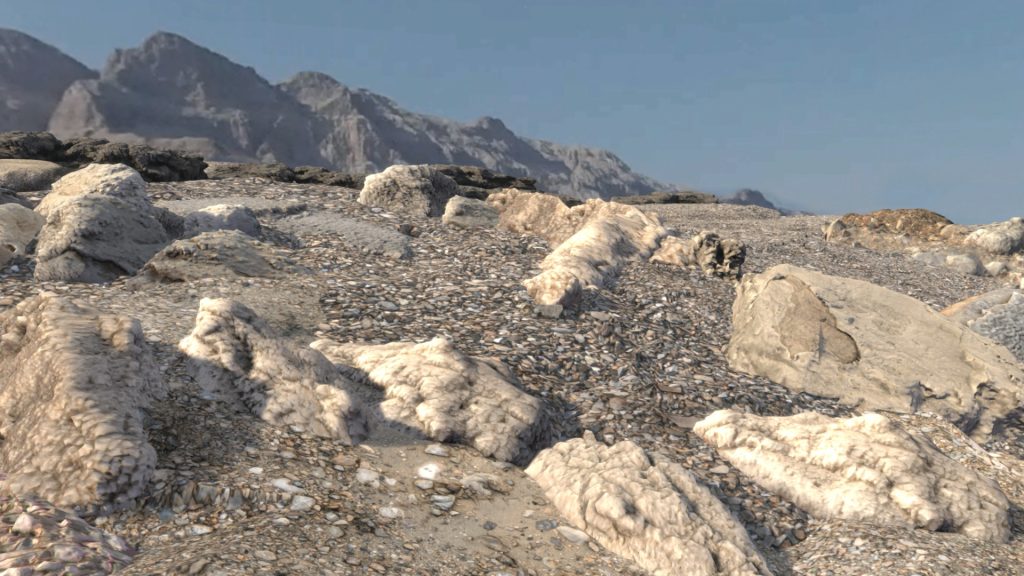
Information
Since this is an interactive documentary, it’s very informative. Unfortunately, it’s mostly just the narration and imagery providing the details, so it’s more of an immersive documentary than interactive. I love that I can walk around it a bit in parts, but there’s no element of picking items up, examining details closely, or self-guiding the experience. It’s pretty linear, but it’s still a big improvement over a static video documentary.
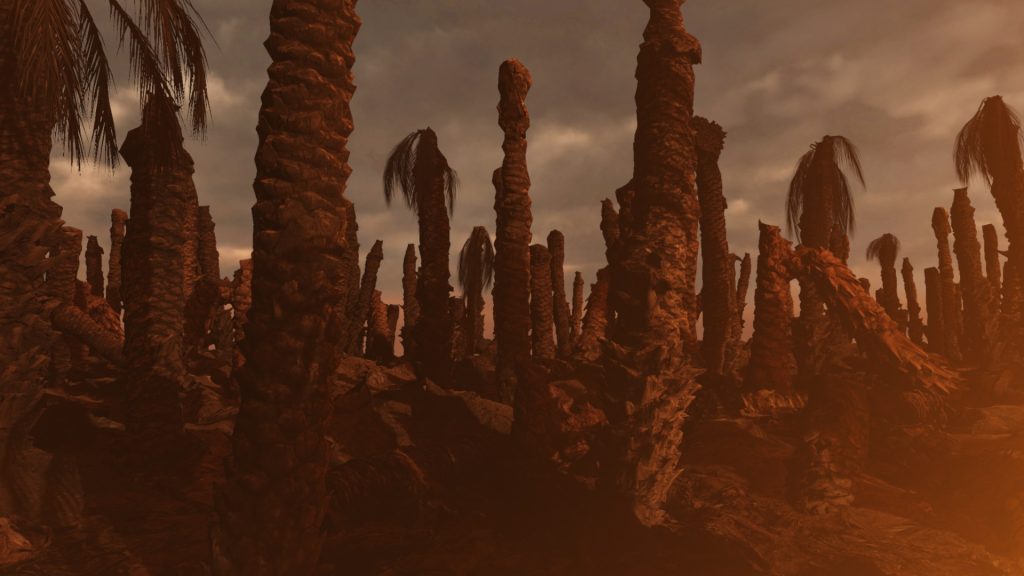
Interactivity
As mentioned, there isn’t much for interactivity. Being able to choose my vantage point in a few places is nice. There are glowing points to touch to advance the action, but I didn’t encounter any branching paths or additional details to find. Toward the end there is some swimming. It’s not a very big part of it, but I can see the potential in being able to swim around in VR. You can also touch a few objects to make some sounds, though I’m not clear about their purpose.
Unfortunately, during the underwater scene and the salt sculpture scene at the end, my performance took such a nosedive, that I was unable to capture screenshots. I’m not sure if it was something with my PC or if the graphics weren’t optimized as well.
Future Potential
This is not an experience which is slated to receive new content. As a documentary, it was crafted to tell a story and convey a point of view. I would imagine any bugs could result in a fix, but I wouldn’t expect additional content.
Summary
Pros
- Powerful message
- High quality visuals
Cons
- Some performance issues
- Very linear (I couldn’t even skip ahead to revisit a chapter)
All in all, this is a good experience. It’s interesting and informative. I went into it knowing almost nothing about the Dead Sea and I feel like it gave me an appreciation for the area. It’s not a travel or exploration experience, so set your expectations accordingly. I think VR is an excellent way to deliver a documentary since it’s usually about making a connection with your audience, and what better way than immersing them in the middle of it. Check it out!
